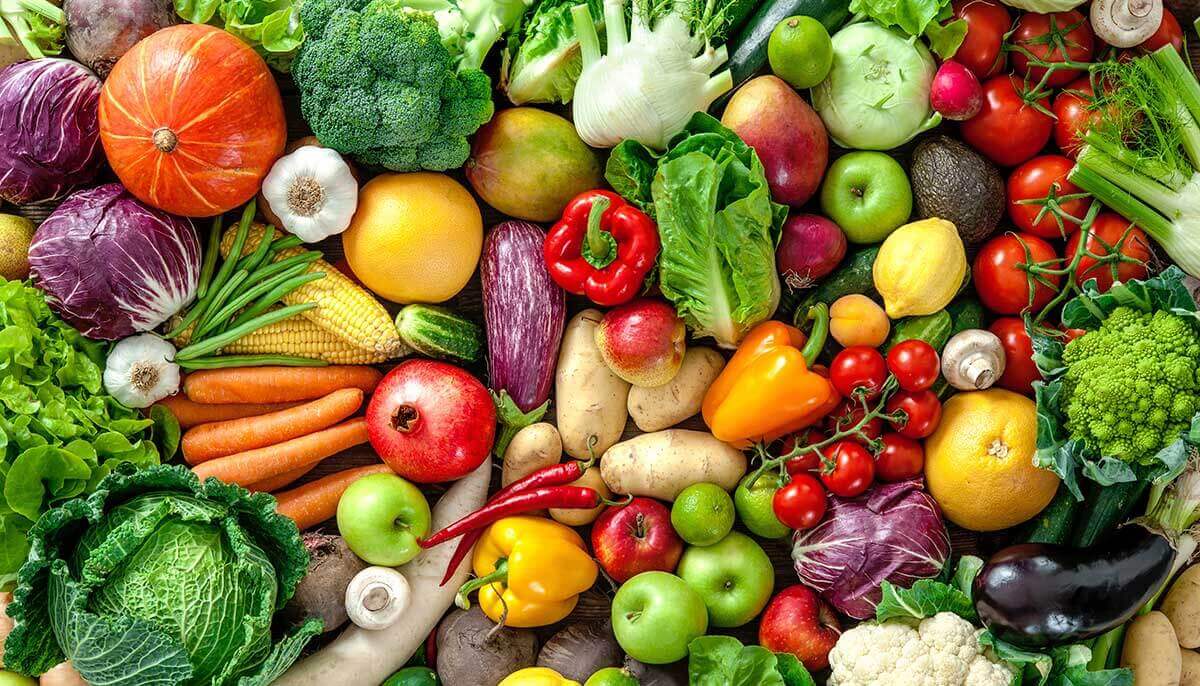
Food is expensive, and yet it’s an essential part of our everyday lives. As a registered dietitian nutritionist, I know we want to provide healthy food options for our families, and the higher costs of fresh produce can make that a challenge.
The importance of eating fruits and vegetables in season is especially relevant today, with COVID-19 restrictions impacting our daily lives and the U.S. economy, leaving us needing to make our dollars go further. Purchasing in season presents an affordable option for eating fresh fruits and vegetables because, in general, seasonal produce is more abundant, which results in lower costs for the consumer.
In addition to the financial savings, in-season produce is typically more flavorful than produce that’s out of season, and it may be more nutritious, too. A study of the nutritional quality of broccoli found that vitamin C content varied by season, with fall varieties containing twice as much as those harvested in the spring. By shopping for produce when it’s in season, produce can be highly nutritious, flavorful and varied.
Here are some fruits and vegetables grouped by peak harvest time to help shed light on when foods come into season:
Spring
- Leafy greens, including spinach and collard greens. These leafy greens are rich in vitamins A and C, both of which play a role in supporting a strong immune system. Include spinach and collard greens as a nutrient-dense side to a dinner entree.
- Strawberries are also rich in vitamin C and are a great source of antioxidants. They are delicious by themselves or paired with a dairy product such as yogurt, or in a milk-based smoothie. Watch the Ask a Nutritionist episode on the benefits of milk and dairy in plant-based eating patterns for more information on this topic.
Summer
- Avocados are rich in monounsaturated fat, a healthy fat that is good for the heart. They transform easily into guacamole and have gained popularity as a toast topper—just smash an avocado over toasted whole-wheat bread and sprinkle a little salt and pepper on top.
- Fresh berries such as blueberries, raspberries, blackberries and strawberries can be enjoyed on a budget in the summer, when the price comes down significantly. Berries have vitamin C, antioxidants and fiber and can be enjoyed by themselves or in plain yogurt and salads.
- Tomatoes are available year-round but are particularly tasty in the summer months. They contain potassium, which has a role in maintaining blood pressure. Enjoy eating tomatoes in salads, sandwiches and salsa.
Fall
- Kale is a dark leafy green that is a great source of vitamin A and manganese, which plays a role in bone formation. It is tasty in salads and soups.
- Vegetables such as parsnips, sweet potatoes and pumpkin contain fiber and other nutrients. They are delicious in soups and stews or can be added as a side dish.
- Pears and apples are high in fiber and taste delicious paired with cheese.
Winter
- Winter squash like butternut squash is a good source of vitamin A and fiber. Simply roast it in the oven with olive oil, salt and pepper for a hearty and nutritious side.
- Citrus fruits such as oranges and clementines are rich in vitamin C and provide a nice boost to the immune system. Children love their sweet taste and the easy-peel varieties make eating them fun.
Eating seasonal produce is an important way to vary the home menu while staying within a budget. For more information on healthy eating patterns, visit HealthyEating.org.
References
Moon M. The MIND Diet: A Scientific Approach to Enhancing Brain Function and Helping Prevent Alzheimer’s and Dementia. Berkeley, CA: Ulysses Press; 2016.
Seasonal produce guide. US Department of Agriculture, SNAP-Ed Connection website. https://snaped.fns.usda.gov/seasonal-produce-guide. Accessed June 22, 2020.
Seasonal produce guide. US Department of Agriculture, SNAP-Ed Connection website. https://snaped.fns.usda.gov/seasonal-produce-guide. Accessed June 22, 2020.
Wunderlich SM, Feldman C, Kane S, Hazhin T. Nutritional quality of organic, conventional, and seasonally grown broccoli using vitamin C as a marker. Int J Food Sci Nutr. 2008;59(1):34-45.



